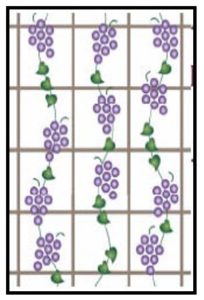I started getting serious about soul care when things in my life started to change. Living in a new city, getting married, and having a child within 3 years is a lot of change in a short period of time! And over the next few years, not only did things in my personal life shift, but the church I pastored and Miami itself experienced significant shifts and changes. Friends moved out of the city. Cost-of-living dramatically increased. The fabric of our neighborhood became rocky.
I felt like I no longer had the rootedness and rhythms that I needed to be healthy.
And at some point I realized that if I did not find ways to anchor my life in rhythms of rest, renewal, and reflection (not just my “spiritual” needs, but holistically), then I was not going to make it. And if I tried to lead from a lack of soul care, I would end up harming and wounding people because of a lack of self-awareness. That put me on a journey of digging deeper into my emotional health, living into a weekly sabbath with my family, having realistic contemplative rhythms and practices, working with a spiritual director, and having a monthly desert day for prayer, journaling, and reflection. It also led me to start eating better and having an exercise plan. It led me to work with a counselor in different seasons and unpack areas where I was emotionally stuck. It has led me to developing deeper friendships with a few others that I can be transparent with about the highs and lows of life.
It became clear to me that my holistic health and growth would never happen by accident or haphazardly. I needed a plan that was realistic for my personality and season of life. I needed a concrete rhythm of life that would help me experience the care, stretching, and formation that I needed.
What is a Rhythm of Life?
The term “Rhythm of Life” is inspired by the early monastic communities that created “rules of life” to help them live out their values together.[1] Monastic communities all over the world live by a common rule of life – a structure or rhythm for their lives that helps them to pay attention to God in everything that they do and move towards greater wholeness in their lives. It is a framework of practices, experiences, relationships, and rhythms that keep them growing on a healthy trajectory. The term “rule” comes from an ancient Greek word that means “trellis.” A trellis is a support structure that enables plants (like a grapevine) to get off the ground, grow upward, and become fruitful. This is the essence of a “Rule” or “Rhythm” – a support structure that helps us grow, move towards holistic health, and bear fruit over time.

Life is messy and doing deep inner work is messier. All of us will experience weariness, pain, discouragement, anger, and loneliness along the way. A Rhythm of Life does not eliminate the mess or the pain of life, leadership, or relationships. But it keeps us anchored when things get chaotic, paying attention to what’s going on beneath the surface of our lives. Growth and the journey towards health does not always have a clear trajectory, but a Rhythm of Life can help guide us in the right direction.
There is no perfect way to structure a Rhythm of Life, and there have been various ways that individuals and communities have done this over the centuries. St. Benedict’s Rule of Life has different practices that center around Prayer, Work, Study, Hospitality, and Renewal. Another common framework is Relationships, Work, Prayer, and Rest. The church that I planted and pastored in Miami had a communal Rhythm of Life that was framed around our 4 core rhythms – Worship, Community, Surrender, and Mission.
It is important to craft a Rhythm of Life that makes sense for you, your season of life, and the unique context of your life. I train individuals creating a Rhythm of Life using the framework of Upward, Withward, Inward, and Outward.
A Rhythm of Life does not eliminate the mess or the pain of life, leadership, or relationships. But it keeps us anchored when things get chaotic, paying attention to what’s going on beneath the surface of our lives. ~ Matt Alexander Click To TweetPlaying Your Rhythms
Rhythm is in the very fabric of nature and life. All of life is made up of rhythm. The seasons of the year – summer, fall, winter, and spring. Each 24 hour cycle – day and night. The ocean – high tide and low tide. Our breath – inhale and exhale.
But perhaps rhythm is best seen and experienced in music. Good music is made up of good rhythm. I attempted to play several instruments as a kid (guitar, saxophone, harmonica, drums), but to no avail. Creating good music requires some level of talent, but even more important than that, it requires time, practice, energy, being willing to learn from others, and finding the right combinations of beats and rests. It is about rhythm, pattern, tempo, flow.
The drums are one of the most popular instruments to play because there is something deeply compelling about the rhythm of the sounds. Something primal and soothing. Something that resonates deep within us. Powerful music comes from this instrument. The drums are really interesting because a drum set is made up of 4 different parts – the kick, snare, toms, and cymbals.
Each part of the drum set is unique and distinct. The snare sounds different from the cymbals and the kick creates something unique from the toms. But when each is played together in rhythm a pretty magical sound is created.
Each of the rhythms (Upward, Withward, Inward, Outward) in a Rhythm of Life are distinct from one another, but they are meant to be played together for our lives to grow in health, beauty, and wholeness.

Upward is the rhythm of spiritual growth and health. Practices and habits that help us experience God regularly, pursue regular rest, and move towards deepening union with the divine can help us with this rhythm.
It is important to consider your unique Spiritual Personality[2] when crafting the Upward rhythm. What fills you with delight, joy, and intimacy with God? How do you connect most easily to the sacred? Where do you find yourself drawn spiritually in this season of life?
The Upward rhythm has looked differently for me in various seasons of life, but some important practices have included daily contemplative prayer and weekly sabbath rest. These practices have been “keystone habits” for me and kept me growing in spiritual health over many years. Some examples include:
- Lectio divina (sacred reading)
- Sabbath
- Singing
- Contemplative prayer
- Time in nature
- Prayer walking
- Retreat
Withward is the rhythm of relational growth and health. Practices that help us be both vulnerable and available to one another can help us with this rhythm.
It is important to consider the Relational Rope tool[3] when crafting the Withward rhythm. Which of your relationships needs extra care, attention, or time in this season? What kind of support do you need from others to move towards greater wholeness? Who do I feel most relaxed and comfortable with?
The Withward rhythm will evolve and take various shapes based on your unique relational needs, but having a few core friends to spend regular time with and having a monthly meeting with a spiritual director have been vital for me in recent years. The practices have helped me to know others deeply and be deeply known as well. Some examples include:
- Shared meals
- Spiritual friendships
- Mentoring
- Date night with spouse
- Addressing relational tension/pain points
- Spiritual direction
- Vacation with friends
Inward is the rhythm of emotional and mental growth and health. Practices that help us identify and process our emotional pain and mental anxiety help us with this rhythm.
It is important to consider your Iceberg[4] when crafting the Inward rhythm. What are you noticing beneath the surface of your life that needs to be attended to? When do you have time to process through your triggers and hard emotions (anger, sadness, depression)? What could intellectual creativity look like in this season of life?
The Inward rhythm has been really crucial for me over the past few years. A monthly Desert Day for solitary reflection, examination, and journaling has been crucial for me to process through my pain and anxiety in a concrete way. Some examples include:
- Working with a counselor
- Journaling
- Prayer of Examen
- Creative expression (art, dance, singing, etc)
- Breath Prayer
- Desert Days (solitary reflection)
Outward is the rhythm of physical and vocational growth and health. Practices that help us care for our bodies and renew our vocational contributions can help us with this rhythm.
It is important to consider your current physical health (both internal and external) and the Vocational Animal tool[5] when crafting the Outward rhythm. How does your body feel in this season and where does it need care? How might you focus your vocational passion and strengths over the next 6 months? What needs to adapt in order for your work to thrive?
The Outward rhythm has been challenging for me to live into at times, but having a realistic exercise routine and clarifying my vocational goals periodically (every 6-12 months) have been important practices for me. Some examples include:
- Exercise plan and accountability
- Preparing healthy meals ahead of time
- Regular visits with medical professionals (doctors, dentists, etc)
- Weekly journaling on highs and lows of work
- Working with a career coach
- Befriending Vocation contemplative exercise
- Defining clear metrics for vocational “success” in a given season
![]() Cultivating the Ecosystem
Cultivating the Ecosystem
The rhythms, practices, habits, and experiences work best if there is some synergy with one another. Remember, you are a soul! You are an ecosystem! It is certainly possible to craft a Rhythm of Life and for it to be strictly compartmentalized, with stark boundaries between different areas of your life. The goal is to move towards greater integration and wholeness.
- Are there ways for your Upward and Inward rhythms to have some overlap with one another?
- Could the practices that help you move towards physical health also be connected to your mental health?
- Are there any “keystone habits” that have a ripple effect on all aspects of your life?
Be more concerned about crafting a pathway for health and growth than about creating a really well-organized self-improvement plan. It is ok for there to be some messiness to your Rhythm of Life if it helps you move towards deeper integration in your life.

Tips for Crafting a Rhythm of Life
Below are a few practical tips as you begin to craft a personal Rhythm of Life.
- Avoid Extremes – One extreme is to try to do lots of new practices all at once and make significant adjustments quickly. This is probably unsustainable and you may exhaust yourself trying too many new things. The other extreme is to be overwhelmed by the possibility of adding or subtracting anything, so nothing ends up happening.
- Brainstorming Reflection – Before you actually craft a Rhythm of Life, take some time to brainstorm different ideas first. Carve out an hour of reflective space to jot down ideas, clarify ways you desire to grow, note any limitations you have in this season of life, and dream a bit.
- Notice What You’re Already Doing – What habits, practices, relationships are you already doing that are life-giving? Maybe you can begin to understand these elements as part of your Rhythm of Life and live into them even more intentionally.
- Only have 2-3 Practices in Each “Rhythm” – If you take on any more than 2-3 practices/rhythm, it will be too much and will quickly become a “to do list” rather than a life-giving rhythm. Think in terms of daily, weekly, and monthly practices/habits.
- Craft in Community – If it is possible to craft a Rhythm of Life in community then do it! This will make the experience much richer for you and it can help to provide relational support for living into any new rhythms or practices you have taken on.
- Re-evaluate 6 Months – Plan to reconsider and debrief your Rhythm of Life every 6 months so you can make any tweaks that could be generative. Your life, needs, and limitations will change over time so it is helpful to periodically make adjustments.
Failing at Soul Care & The Long View
You will “fail” at your Rhythm of Life. There will be days or weeks or months where you do not live into it well because of apathy, an unforeseen change to your schedule, forgetfulness, or some other reason. Each “failure” is an opportunity for further reflection and examination.
- Perhaps something in your Rhythm is not working for you anymore and it is time to let it go.
- Maybe your resistance to a particular practice reveals a script that has been hidden from you but is now visible.
- Your apathy towards a spiritual practice might be connected to the emotional exhaustion you are feeling in that season of life.
“Failing” at your Rhythm does not need to be the end point, but rather an opportunity for some more inner excavation. After all, the goal of soul care practices and rhythms is not “perfection” but health, wholeness, and beauty.
Failure is the path; beauty is the destination. We walk toward beauty on the path of failure. Which is to say that formation occurs at the interplay of failure and beauty. No habits can be pursued for the purpose of success or productivity or a new and better you. They must be done for the vision of beauty. If the goal is self-help, failure will destroy you. But if the goal is beauty, failure makes that goal shine all the more brightly. So you get up and keep walking.[6]
I have learned over the years that having a long view with soul care is crucial. If I beat myself up for not fulfilling one of my practices or losing track of a new habit I want to try or if I become impatient because the results I desire come later than I expected, I have done damage to my life. Soul care is gradual, slow, and long work.
But if I think about the type of person and leader I will be 20, 30, 40 years from now, I get excited because I will have been on the journey of soul care for a long time by that point. I still will not be perfect (whatever that means anyway), but I will be more healthy and whole than I am now. Having a long view when it comes to my own formation helps me to be both patient with the process, but also more motivated to live into my daily, weekly, and monthly practices.
Join a You Are a Soul Cohort
This post is part of the You Are a Soul Series:
- Part 1: You Are a Soul
- Part 2: Emotional Health
- Part 3: Relational Health
- Part 4: Spiritual Health
- Part 5: Physical Health
- Part 6: Mental Health
- Part 7: Vocational Health
- Part 8: Crafting a Rhythm of Life

[1] I prefer the term “rhythm” to “rule” primarily because of how it sounds to our modern ears. However, use whichever term works best for you.
[2] This is adapted from Sacred Pathways by Gary Thomas.
[3] Dan White, Jr. Subterranean: Why the Future of the Church is Rootedness, p. 154-160.
[4] I was first introduced to this tool through Pete Scazzero and Emotionally Healthy Spirituality. It is the fundamental image for this remarkable ministry and I highly recommend picking up all of their resources. emotionallyhealthy.org
[5] I am adapting Parker Palmer’s idea of the soul being like a wild animal in his marvelous book, Let Your Life Speak, p. 8.
[6] Justin Whitmel Earley, The Common Rule, p. 162.
Share this Post
